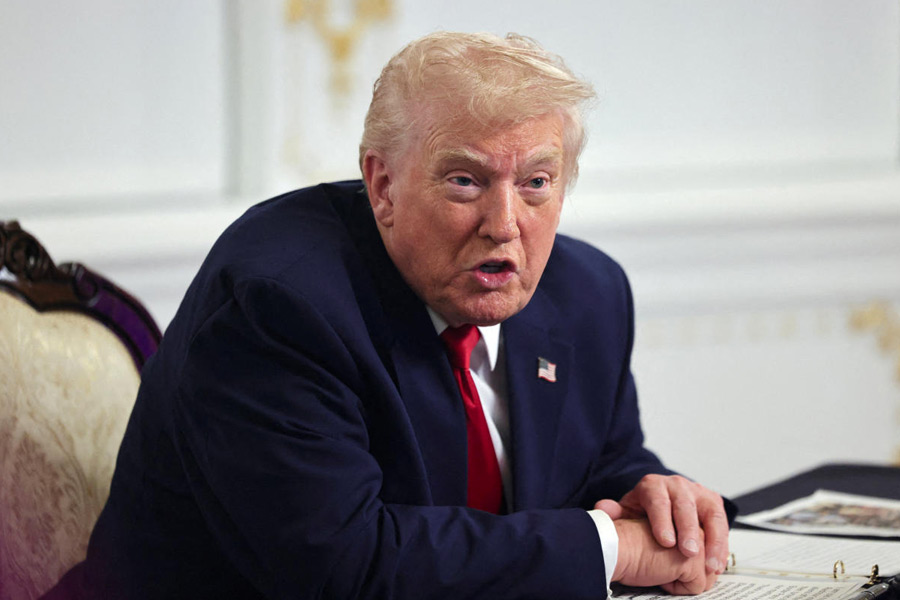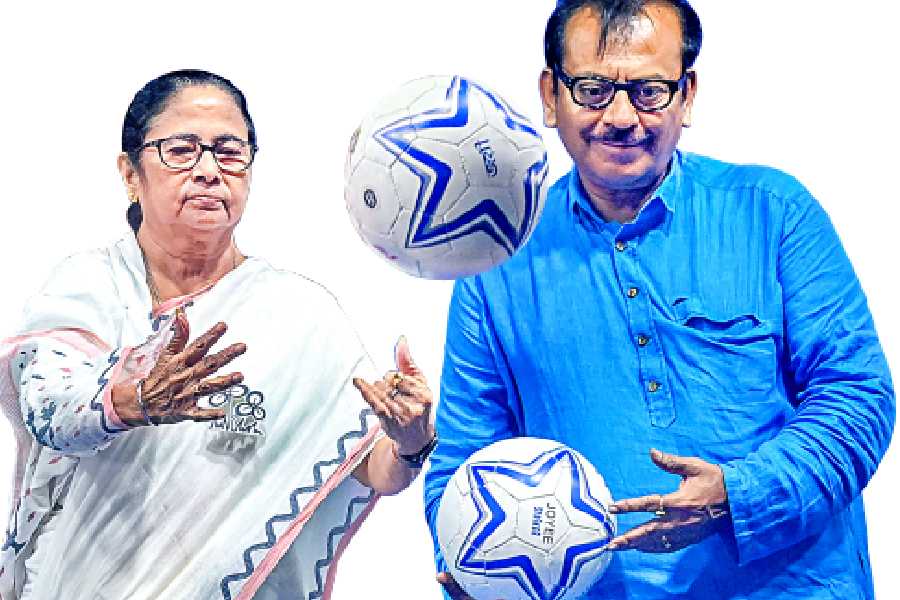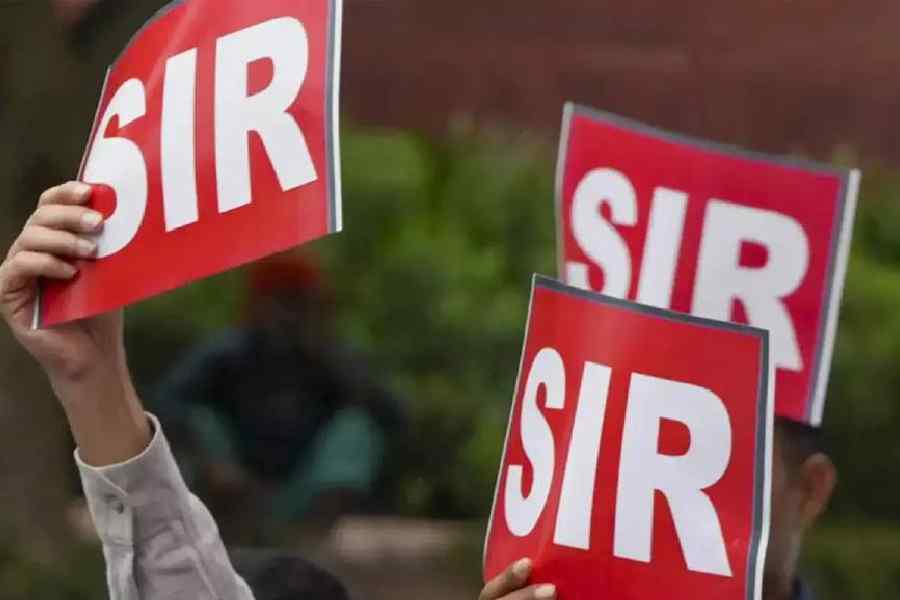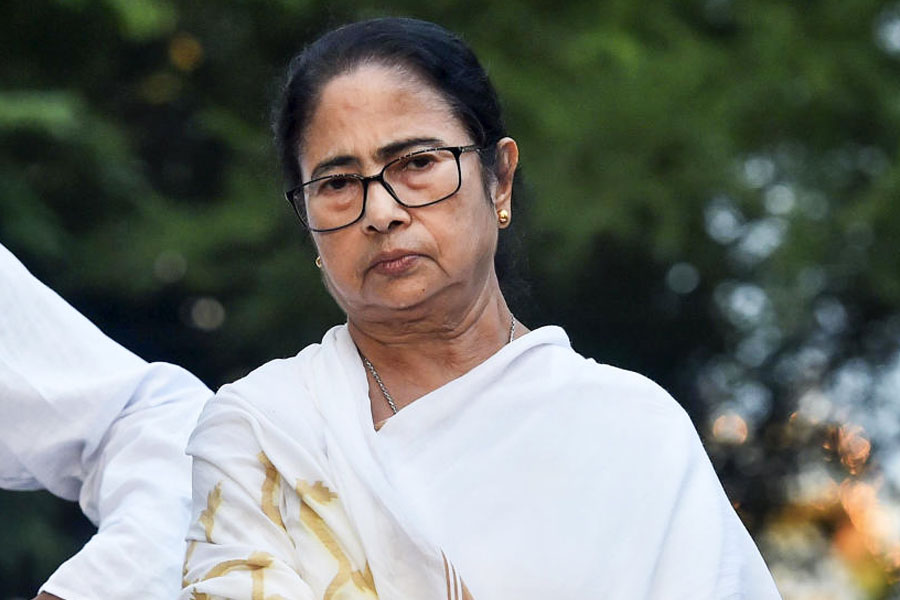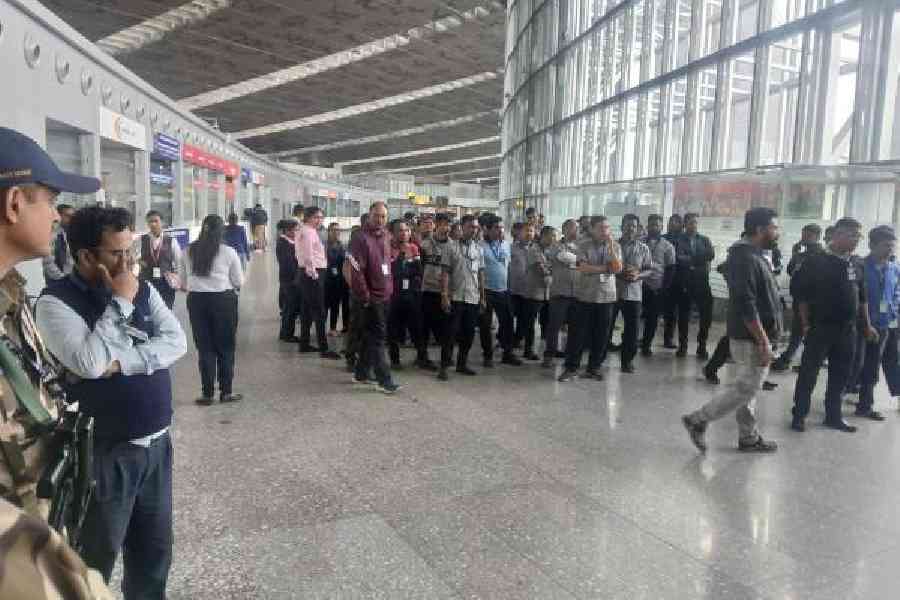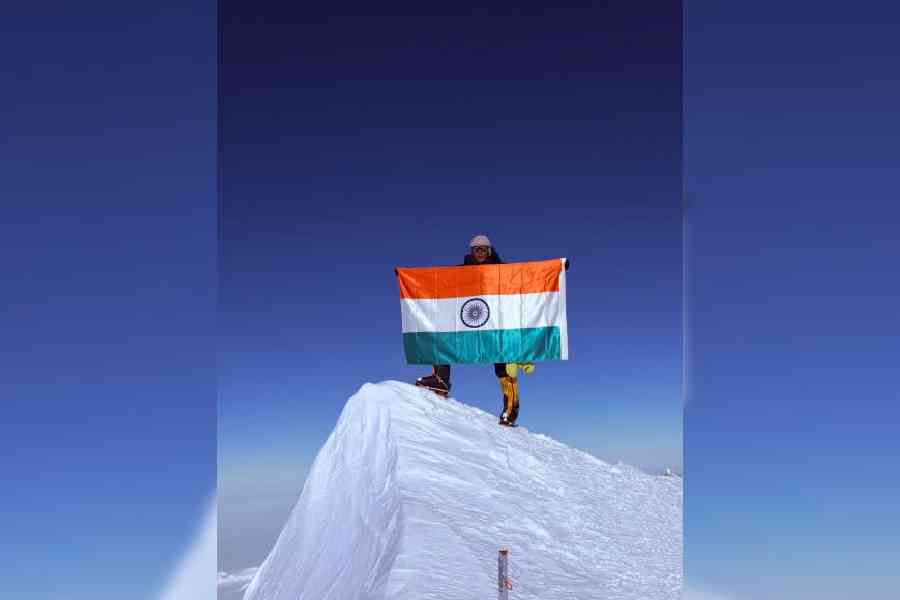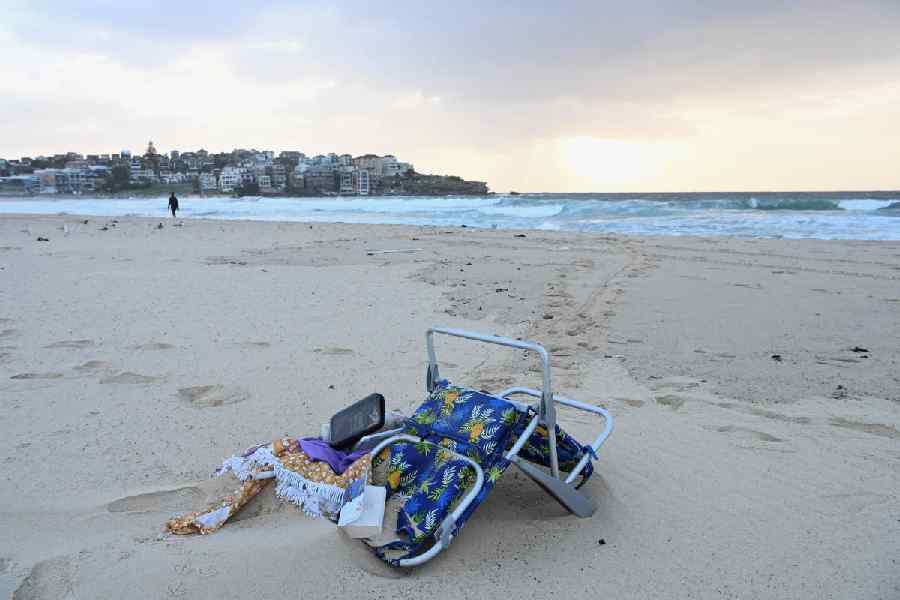 |  |
| Jagannath Basu and his team present a srutinatak, Yuganayak, at the concluding ceremony of the 150th birth anniversary of Swami Vivekananda at Belur Math and (right) chief minister Mamata Banerjee spoke at the youth convention on January 29. Pictures by Gopal Senapati | |
Whether it is the chief minister or a retired Irish teacher, Swami Vivekananda’s charisma, wisdom and aura draw all. Even after 150 years of his birth, Swamiji’s allure has not dimmed, his relevance has not waned and his teachings hold out as a beacon even in this age of materialism and self-gratification. This was the biggest take-home from the concluding ceremony of the 150th birth anniversary celebrations of Swami Vivek-ananda organised by Ramakrishna Math and Mission at Belur Math from January 19 to 30.
The chief minister, Mamata Banerjee, while speaking at the youth convention on January 29, said how she drew sustenance from Swami Vivekananda’s book Vivekananda: His call to the Nation. A year back, at the opening ceremony of the 150th birth anniversary celebrations, the chief minister had appealed to the monks of the order to help make good human beings, echoing Swamiji’s man-making mission. And to help the monks in their man-making mission, Mamata Banerjee donated a five acre plot in Rajarhat-New Town to the Ramakrishna Mission to start a centre for human excellence. Apart from that, the state government has also sanctioned a grant of Rs 14 crore 91 lakh for the infrastructural development of the centres and sister concerns of Ramakrishna Mission around the state. She also said that Roy Villa in Darjeeling, where Sister Nivedita died and Sarada Devi’s residence in Baghbazar in Calcutta would be marked as important sites on tourist guide maps.
Speakers at the conventions, including monks of the Ramakrishna order, representatives of NGOs and social service organisations and social researchers remembered the monk as a visionary who was relevant not just in his homeland but across the globe.
 |
| The flotilla that sailed on the Hooghly on January 13 to mark Swamiji’s visit to the West |
Mona Cleary, a retired teacher in Ireland, spoke on Swamiji’s message to humanity at the devotees convention on January 26. She has studied philosophy at the School of Philosophy and Economic Science is Dublin and that sparked off her interest in inter-faith dialogue. Coming across texts on various religious philosophies around the world, Cleary, undoubtedly, found Swami Vivekananda’s teachings to be the most relevant in the global situation. According to Cleary, “Swami Vivekananda was a great visionary of human unity and love. At the Parliament of Religions in Chicago in 1893, Swami Vivekananda spoke on the harmony of religions, religious pluralism and unity in diversity. The depth in his profound words delivered over a century ago are quite progressive and could be adopted anywhere in the new millennium and awaken spiritual consciousness in society.” Cleary was among the international delegates who came to attend the 12-day long programme at Belur Math. The concluding ceremony set sail on January 13 with a tour on the Hooghly where a 32 vessel flotilla started from Budge Budge and ended at Belur Math after going to Panihati. The event was organised as a commemoration of Swami Vivekananda’s triumphant visit to the West.
The formal inauguration of seminars, conventions and discussions was held on January 19 when the president of Ramakrishna Math and Mission, Swami Atmasthanandaji Maharaj, lit 150 lights on the makeshift stage and pandal erected on the eastern side of the main temple at the math. With more than 1,000 conch shells blowing on one side and 55 dhaks and 150 madols playing on the other, the ambience was electrifying. Subrata Mukherjee, the state minister for rural development and panchayat, was also present on the occasion. He inaugurated the exhibition on national integration at the math premises in the evening. The exhibition, titled National Integration through Art and Craft, had handicraft exhibits from across different states of India. Swami Vivekananda’s childhood was depicted in relief images near the entrance to the exhibition.
Although the formal celebration of Swamiji’s sesquicentenary by the Ramakrishna Math and Mission commenced a year back, social service and other welfare activities of the order dedicated to this celebration had started way back in 2010. Through the four years the Mission received a grant from the central government and has also received assistance from various other state governments to carry out philanthropic work. In the past one year, centres in India and across the world organized lectures, youth conventions, international seminars and cultural events to celebrate the 150th birth anniversary of the founder of the order. Initiatives were taken to start various literary and other activities. The central government funds were used to publish a short life sketch and teachings of Swami Vivekananda in some major regional and Indian languages and dialects and also some non-Indian languages, for the distribution of books to libraries of all the Indian universities, government approved libraries, for the production of a feature film and DVDs on selected works of Swamiji, formation of youth counselling cells, organising youth conventions, youth camps and seminars. Several philanthropic programmes have been initiated during this period. The Gadadhar Abhyudaya Prakalpa for physical, mental and spiritual development of children has been initiated in 150 areas in India. The Vivekananda Swasthya Pariseva Prakalpa is a children’s nutrition and preventive healthcare programme, Sarada Palli Vikas Prakalpa aims at the welfare, education and empowerment of women in 10 villages and the Akhandananda Seva Prakalpa aims at service to marginalised people in 10 pockets of poverty.
The four-year long programme culminated in Belur Math where a variety of programmes were organized through the 10 days. Monks of the Ramakrishna order from across India and the world along with other speakers, who have been associated with the Ramakrishna Movement, visited Belur Math to attend this historical event. The devotees’ convention held on January 25 and 26 saw a gathering of over 13,000 devotees at the math. Swami Vivekananda’s relevance and significance in the Western world was evident from speeches delivered by the delegates who had come from various centres from around the world. Liliana Malkova, professor at Moscow State University and the secretary of Ramakrishna Society – Vedanta Centre in Moscow spoke on Swamiji’s relevance in Russia in the 19th century when Russian serfdom was considered worse than American slavery. He spread the message of human love and equality at a time when class and caste distinctions were strongly embedded in society.
The role of the devotee was also discussed at length at the two-day convention. The significance of Dakshineswar temple in the Ramakrishna Movement was elaborated by Kushal Chowdhury, the trustee and secretary of Dakshineswar Kali Temple and Debottar Estate. He also spoke on the real awakening of the people of India, where people would be able to look beyond themselves and think of those who are less fortunate. Harsha Dutta, the editor of Desh magazine, spoke on how the householder devotees of Sri Ramakrishna had equal contribution in the development of the Ramakrishna Math and Mission.
The international seminar held on January 27 and 28 brought together a collection of ideas on the same platform. Swami Vivekananda’s concept of Vedanta, his message on women’s role in bringing socio-cultural change, his contribution to global civilisation were discussed by each speaker. The governor, M K Narayanan attended the inaugural session. As a symbol of religious tolerance and harmony as Swamiji had envisioned, a Parliament of Religions, was held on January 28 where representatives of different faiths spoke on harmony of religions with respect to their own faiths, some even tried to draw parallels between their own scriptures and those of Hindu religion. Swami Chetanananda, the minister-in-charge of Vedanta Society of St Louis, USA, said in his presidential address that Swami Vivekananda was an important point of reference for many of those who wanted to study religious diversity in the West.
Swami Vivekananda has always been called a leader for the youth and he has been ever-inspiring for the young generation. This was evident at the youth convention held on January 29 and 30. Swamiji’s vision on modern education, his literary ideas and his concept on science education were discussed at the convention by professors, teachers and scientists.
Cultural programmes interspersed between seminars and discussions. Srikanto Acharya rendered Mono cholo nijo niketaney at the inaugural session of the devotees’ convention while elocutionist Jagannath Basu and his team presented an audio narration, Yuganayak, based on the life of Swami Vivekananda on the same evening. Pandit Asit Kumar Banerjee presented a rudra veena recital later in the evening. A puppet show on Swami Vivekananda was presented by Bharatiya Lok Kala Mandal, Udaipur.


